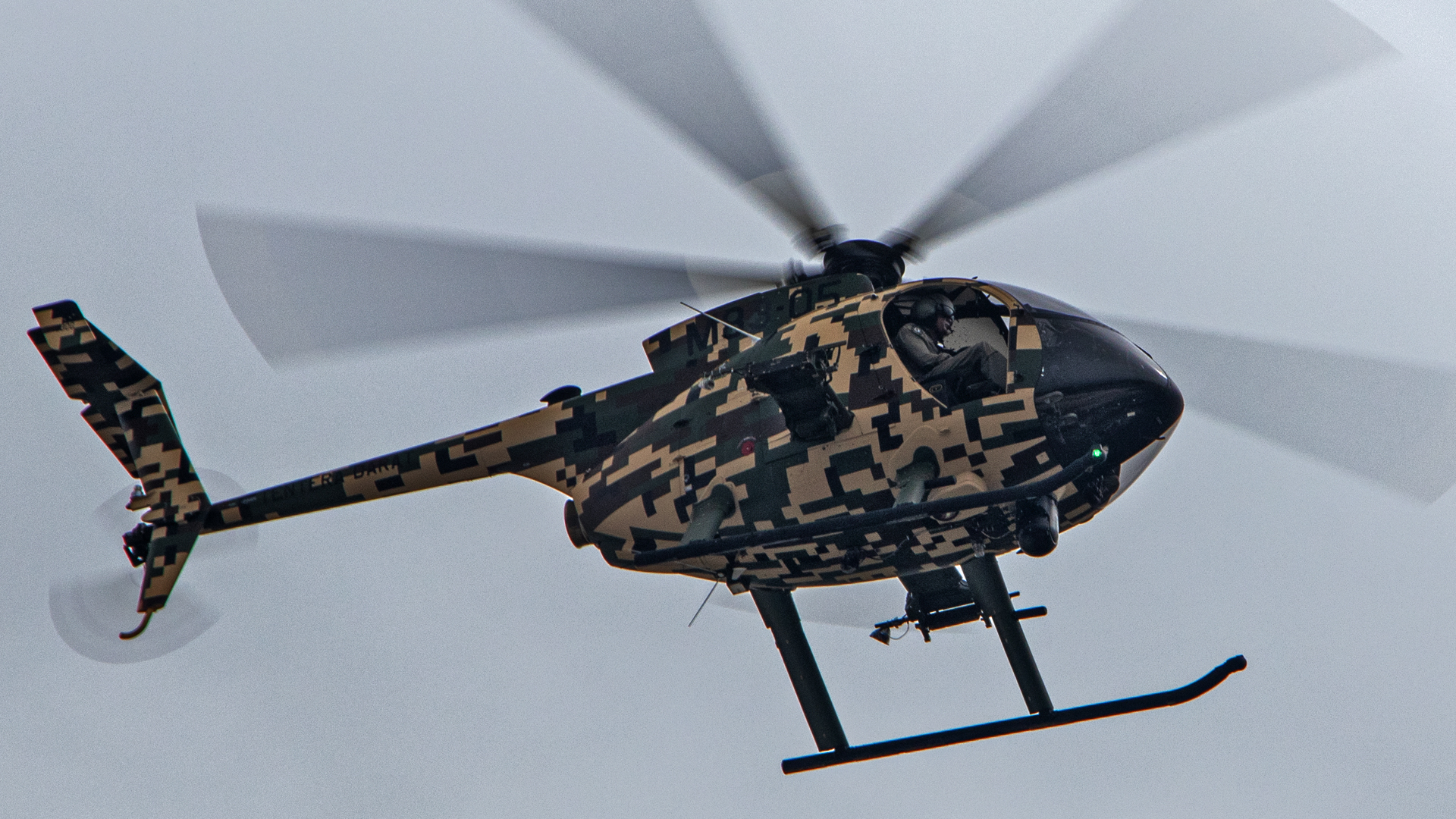
SHAH ALAM: Destini Bhd has officially handed over the six MD 530G light scout attack helicopter to the Army, the company said today. The handover was made following the completion of the the Final Acceptance Test which deemed the helicopters as airworthy, the company said in release/announcement to Bursa Malaysia. The Army has not issued any official announcement on the hand over however.
Anyhow, the six helicopters left the Sapura Aviation hangar (where they have been based since the delivery in February) on Saturday. They apparently flew to Kem Sirajuddin in Gemas where their pictures have gone viral on social media. It is interesting to note that they are likely based at the camp for the time being to conduct firing trials after their handover.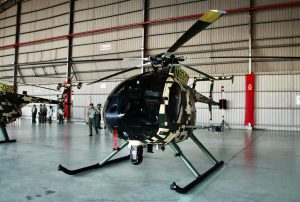
As you are aware the helicopters arrived here in late February, some seven years after the contract was originally signed back in 2015. Destini bought over the contract from the original agent, Halaman Optima in 2017 as mentioned in the release. What is interesting is that Destini’s statement glossed over the delays even citing the pandemic as an excuse for the late delivery. Malaysian Defence had covered the saga extensively over the years, so please check the archives for more details.
Release from Destini
DESTINI HANDOVERS SIX MD530G HELICOPTERS TO ARMY
KUALA LUMPUR – JUNE 13, 2022 : Destini Berhad (“Destini” or “the Group”)today handovers six multipurpose armed reconnaissance helicopters model MD530G to the Royal Malaysian Army (“RMA”) after the completion of its Final Acceptance Test, deeming each helicopter airworthy.
The helicopters, that were manufactured by MD Helicopter Inc., a company based in the United States of America (“USA”), will be deployed at RMA’s air unit base at the Mahkota Camp in Kluang, Johor and at the Eastern Sabah Security Command (“Esscom”).
To recap, in 2017 Destini Group acquired a 70% equity interest in Halaman Optima Sdn Bhd (“HOSB”) through its whole-owned subsidiary Destini Prima Sdn Bhd. HOSB was awarded the contract worth RM321 million by the Ministry of Defence Malaysia in 2015.
The delivery of the helicopters saw a delay due to the negotiation for extension of time on the contract with the Ministry of Defence Malaysia and the COVID19 pandemic restrictions. The progress of the contract slowed because representatives from the RMA were not able to travel to USA for training as
scheduled.
As part of its contract obligations, eight pilots and nine technicians from the RMA were to travel for training in Arizona, USA. Seeing that the Malaysian borders were closed all training were put on hold until borders reopened in April 2021.
In February 2022 all six helicopters took a 31-day journey to arrive in Malaysia after its pre-delivery inspection concluded in December last year.
Destini’s management is of the view that with the delivery of the helicopters, the Group could leverage on its existing expertise in maintenance, repair and overhaul (“MRO”) to secure MRO services on the helicopters and on other RMA air unit assets.
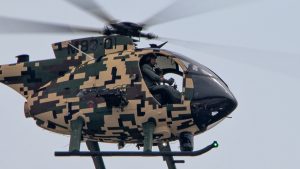
It is also interesting to note that the Army had also failed to built a dedicated hangar facility to operate the MD530Gs outside off Kem Mahkota in Kluang. As off now, from the pictures circulating in social media, the helicopters are being staged off a parking lot from one of the units at Kem Sirajuddin. As for the Royal Malaysian Army (RMA) as stated by Destini in their release, its their fault, not mine.
— Malaysian Defence


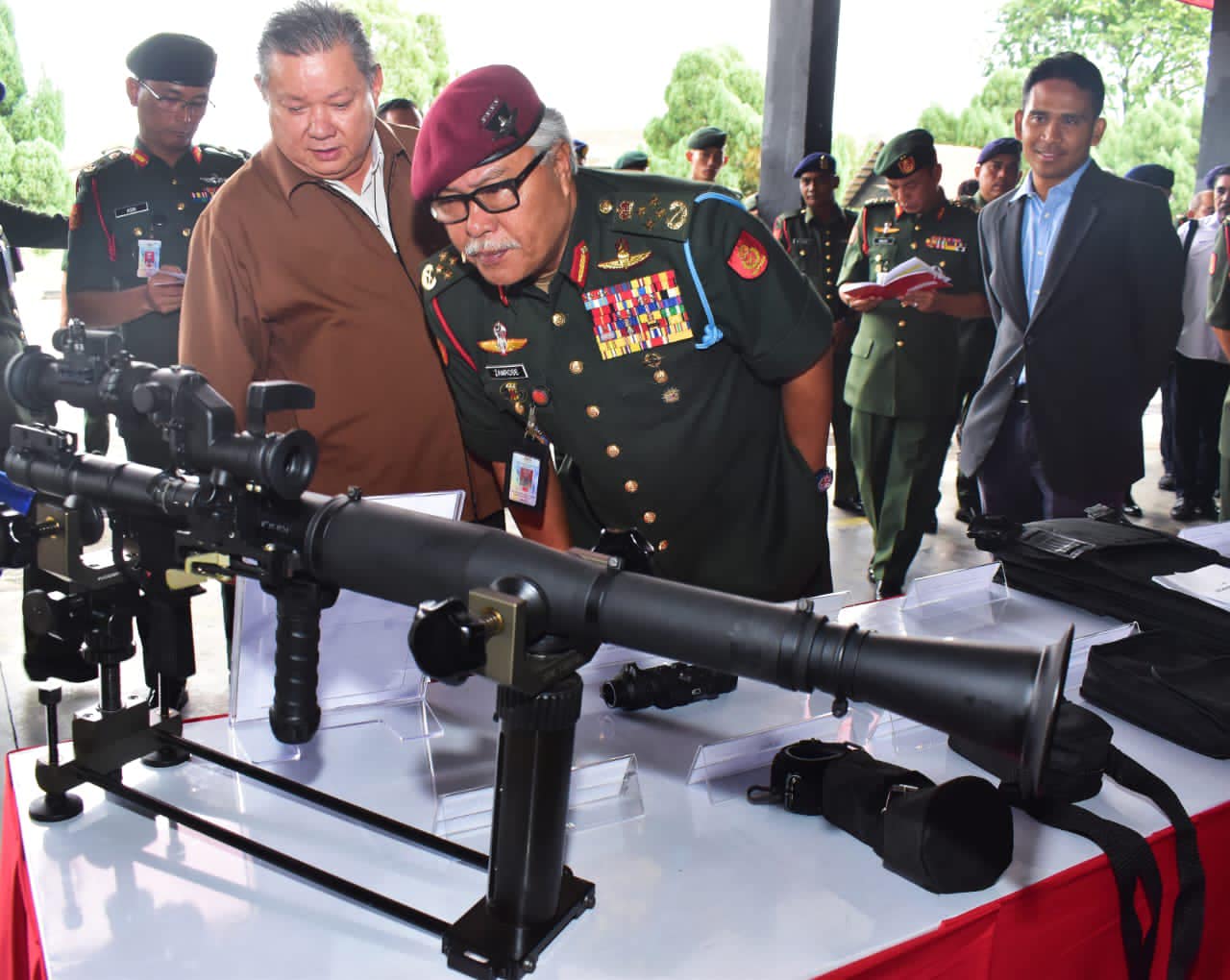
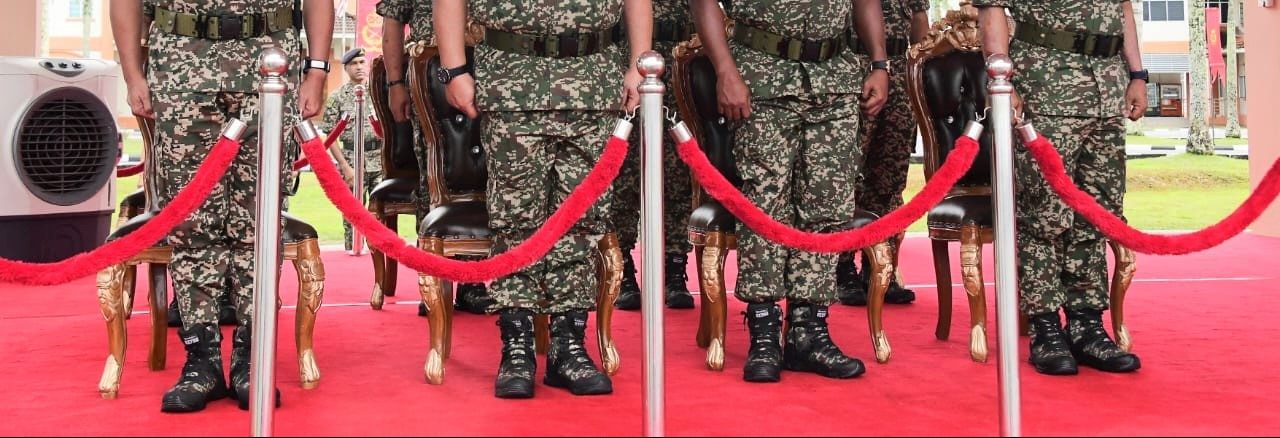
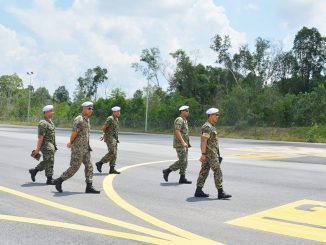
Actually am curious and call me stupid to boot, can the purchase of these ‘LAHs’ be offset by a similar purchase of dedicated UAVs like TB2s?
Nope
Just following precedent that no matter how troubled it is, we still continue to complete all the deliveries to the end users. This bodes well for LCS & OPV projects respectively.
Taib – ”can the purchase of these ‘LAHs’ be offset by a similar purchase of dedicated UAVs like TB2s?”
I don’t understand your question. Are you asking if we could have done away with the need for such helicopters by instead getting armed UASs? If so the answer is yes and no… What we should do is have some helicopters operating in tandem with UASs; both supplementing each other; both good for slightly different things.
Imho im not sure if such open cockpit w/o doors are actually safe, the pilots would be strapped in but a lucky stray shot from a bullet could injure or kill easily.
Are you asking if we could have done away with the need for such helicopters by instead getting armed UASs? If so the answer is yes and no… What we should do is have some helicopters operating in tandem with UASs; both supplementing each other; both good for slightly different things.
Thanks Azlan. That’s exactly my question. To be honest, I don’t quite see how long can current attack helicopters survive modern day battlefields. I mean, it’s alright against non-state actors, but as said, I am just curious at how effective these are against conventional forces.
Helo and UAS working in tandem is still on limited operational use currently and this is limited to the most advanced forces. I don’t see it working in the MY context in the near future. As the LSAH itself, it is too short legged to do anything worthwhile with a long endurance UAS. The MKM is a better option really
Taib,
Very true but also bear in mind that UASs also need permissive airspace and whether in the “War On Terror”, Libya, Iraq, Nargano Karabakh and other places; UASs operated in uncontested skies; against either opponents which totally lacked the means to counter them or had a GBAD but one not optimised to deal with UASs.
In the Ukraine we’ve heard so much about the TB2 and its successes but much less on UAS losses. UASs have been lost in significant numbers and we must never assume that in any future conflict we may find ourselves in that the opponent won’t have the means to effectively counter UASs.
Ultimately when it’s all said and done UASs are slow and are defenceless; they can be dealt with via a variety of hard and softkill means – precisely why some armies are putting so much effort in AD platforms configured to deal with UASs; as well as manned platforms at a low to medium altitude.